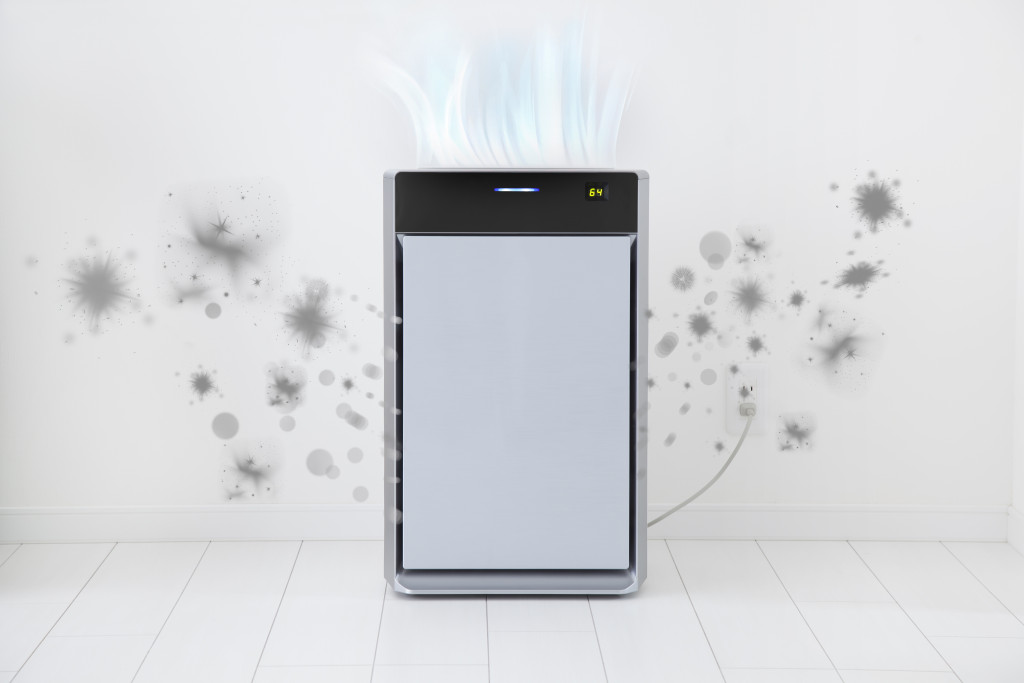- Declutter and organize to promote a sense of calm and ownership. You can also create designated spaces for your children’s belongings.
- Increase natural light in your home to boost vitamin D intake and promote better sleep.
- Create a safe space by establishing boundaries, creating a nurturing environment, encouraging open communication, and promoting independence.
- Incorporate calming colors into your child’s room to create an overall calming atmosphere.
- Improve indoor air quality to reduce respiratory problems, allergies, and other health issues.
As parents, we always want what’s best for our children, including their well-being. We often think about their physical health and safety, but did you know that their environment can also impact their emotional and mental well-being? Simple home improvements can create a comfortable, nurturing, and secure home that can help children thrive. In this blog, you will learn about a few home improvements that can promote well-being for your children.
Declutter and Organize.
Having a cluttered and disorganized home can be overwhelming and stressful for both children and adults. Decluttering and organizing your home not only helps keep it clean but it can also promote a sense of calm and peace. When children have a designated space for their belongings, they feel a sense of ownership over their environment, which can promote a sense of autonomy and responsibility.
Increase Natural Light.
Natural light is essential for both physical and emotional health. A dark and poorly lit home can have a negative impact on moods and can even disrupt the body’s natural circadian rhythm, leading to sleep disturbances. Increasing natural light in the home can promote better sleep, boost vitamin D intake, and boost mental and emotional well-being.
Create A Safe Space.

Children need a safe space where they can be themselves, let their guard down, and process their emotions. As parents, creating a safe space for your children is vital to their emotional well-being. Here are the four steps you need to take to create a safe space:
Establish boundaries.
Establishing boundaries and keeping them consistent is key to creating a safe space. Children need to know that their feelings and opinions will be respected while also knowing what’s expected of them.
Create a nurturing environment.
Creating an inviting and nurturing atmosphere encourages children to express themselves freely without fear of judgment or criticism. This includes being mindful of your words, facial expressions, and body language when interacting with your children.
Encourage open communication.
Encouraging open communication and being willing to listen to your children can help foster trust and a deeper connection with them. This also helps create an environment where their feelings and opinions are respected, which is essential for emotional well-being.
Promote independence.
Children need a sense of autonomy in order to feel secure and confident in their environment. Giving your children the opportunity to make decisions and take on responsibilities helps promote a sense of independence, which is essential for well-being.
By creating a safe space for your children, you can help them develop the confidence and skills to face challenging situations.
Incorporate Calming Colors.
Colors have the power to influence mood and emotions. Colors like blue, green, and purple are known to have a calming effect on the mind and body, while bright and bold colors can be overstimulating. Consider incorporating calming colors into your child’s room. You can do this by adding furniture or by adding decor like throw pillows and blankets.
Or better yet, you can paint the entire room in a soothing color. This will not only give the room an overall calming atmosphere, but it will also act as a sanctuary for your child. Just make sure you employ the help of a professional house interior painting service provider. These professionals are knowledgeable in all aspects of interior painting, including color selection, preparation, and application techniques. They use high-quality materials that are resistant to fading and wear over time, ensuring that the paint job will last for years to come.
Improve Indoor Air Quality.

Indoor air quality can have a significant impact on overall health and well-being. Poor indoor air quality can lead to respiratory problems, allergies, and other health issues. To promote a healthy indoor environment, consider installing air purifiers, using non-toxic cleaning products, and keeping houseplants to purify the air.
Creating a safe and comfortable environment is essential for your children’s well-being. By decluttering and organizing, increasing natural light, creating a safe space, incorporating calming colors into their room, and improving your home’s indoor air quality, you can ensure that they have the best possible environment to thrive in.
Taking these steps will help ensure that your children are physically healthy and emotionally secure. Investing time and energy into making small improvements around the house can go a long way in promoting overall health and happiness for everyone living under its roof.




